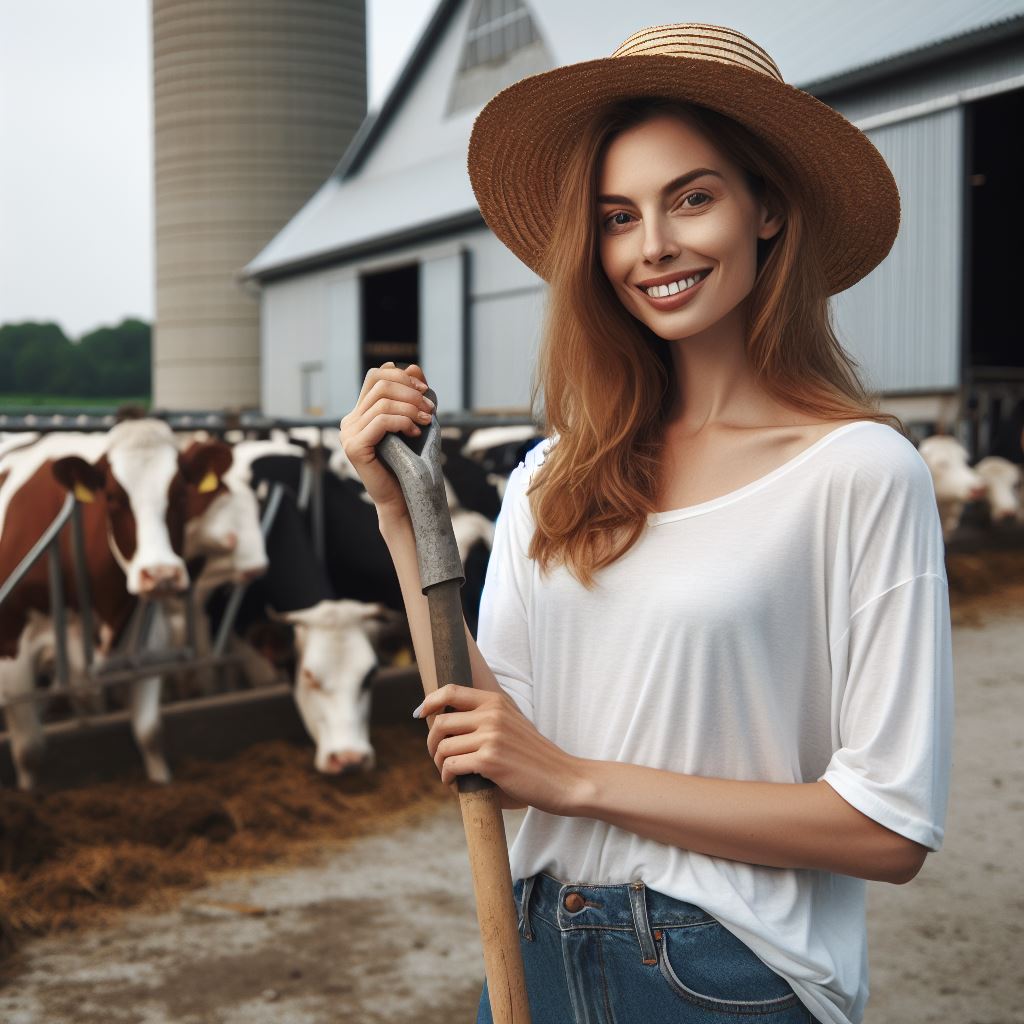Introduction
Rabbit genetics plays a crucial role in breeding for both health and size.
Understanding the genetic makeup of rabbits is essential for producing healthy and high-quality animals.
Additionally, rabbit breeding has significant relevance in the farming industry, as rabbits are bred for their meat, fur, and even as pets.
By harnessing the power of genetics, breeders can optimize desired traits and improve overall rabbit populations.
- Breeding rabbits requires a thoughtful approach to enhance both health and size.
- Healthy genetics contribute to robust offspring, ensuring long-term vitality within rabbit populations.
- Prioritizing size involves careful selection to achieve desirable traits without compromising overall well-being.
- Understanding rabbit genetics is pivotal for breeders aiming to produce thriving and appropriately sized rabbits.
- This section explores effective strategies and considerations for breeding healthy and appropriately sized rabbits responsibly.
Understanding rabbit genetics
- Rabbit genetics involve studying chromosomes, genes, and traits that determine their characteristics.
- Certain genes control the health and size characteristics of rabbits, influencing their overall well-being and physical attributes.
- Dominant genes have a stronger influence on determining phenotypic traits compared to recessive genes.
The basics of rabbit genetics, including chromosomes, genes, and traits
Rabbits, like any other living organisms, exhibit a range of physical traits and characteristics that can be inherited from their parents.
Understanding the basics of rabbit genetics is crucial for rabbit breeders and enthusiasts as it allows for targeted breeding to achieve desired characteristics such as health and size.
At the core of rabbit genetics are chromosomes, genes, and traits.
Chromosomes are thread-like structures found in the nucleus of every cell that carry the genetic information.
Each rabbit has 22 pairs of chromosomes, with one pair determining the sex of the rabbit.
Genes, on the other hand, are segments of DNA within the chromosomes that provide instructions for the development and functioning of different traits.
They act as the blueprint for an organism’s characteristics, including their health and size.
How certain genes control health and size characteristics in rabbits
When it comes to health and size characteristics in rabbits, certain genes play a significant role.
For instance, genes related to coat color can also be linked to health traits.
Understanding these genes and their interactions can help breeders select rabbits with desirable traits and avoid passing on any genetic predispositions to health issues.
A crucial concept in rabbit genetics is the dominance and recessiveness of genes.
Transform Your Agribusiness
Unlock your farm's potential with expert advice tailored to your needs. Get actionable steps that drive real results.
Get StartedDominant genes have a more powerful influence on determining phenotypic traits and can override the effects of recessive genes.
For example, a dominant gene for a specific coat color will be expressed even if the recessive gene for a different color is present.
Elaborate on the role of dominant and recessive genes in determining phenotypic traits
However, recessive genes are not necessarily negative.
In some cases, they can lead to desirable traits.
For example, a recessive gene for a dwarf size can contribute to creating smaller rabbits, which may be preferred in certain breeds or for specific purposes.
Successful breeding programs take into account both dominant and recessive genes to achieve the desired health and size characteristics.
By selective breeding, breeders can increase the chances of offspring inheriting the desired genes while minimizing the risk of passing on undesirable traits.
Essentially, understanding rabbit genetics is vital for breeders aiming to improve health and size characteristics in their rabbits.
By comprehending the basics of chromosomes, genes, and traits, breeders can make informed decisions and use selective breeding to achieve desired outcomes.
The role of dominant and recessive genes in determining phenotypic traits further emphasizes the significance of careful breeding practices.
Read: Sustainable Poultry Farming Practices
Breeding Strategies for Health
When it comes to breeding rabbits, ensuring overall health should be a top priority.
Breeding for health not only helps to produce robust and disease-resistant rabbits but also contributes to their longevity and well-being.
Here, we will discuss the importance of breeding for overall health in rabbits and highlight the significance of selecting genetically healthy rabbits as breeding stock.
Importance of Breeding for Overall Health
Breeding for overall health is crucial in maintaining the vitality and fertility of rabbits.
By selecting rabbits with strong immune systems, good body condition, and no hereditary health issues, breeders lay the foundation for a healthy lineage.
Healthy rabbits are more capable of withstanding environmental stressors, preventing the transmission of diseases, and maintaining optimal reproductive performance.
Additionally, breeding for health leads to the preservation of desirable traits in rabbits.
A rabbit that is free from genetic health issues is more likely to pass on its positive attributes to its offspring, leading to a stronger and more resilient genetic line.
These traits may include a robust body structure, good muscle tone, attractive fur coloration, and overall vigor.
Significance of Selecting Genetically Healthy Rabbits
Choosing genetically healthy rabbits as breeding stock is vital as it ensures the propagation of favorable genetic traits and minimizes the risk of passing on inheritable health problems.
When selecting rabbits for breeding, several factors should be considered to identify genetic health:
- Observe the rabbits’ physical appearance, looking for any signs of illness or deformities.
- Check their family history to identify any hereditary health issues that may have been present in previous generations.
- Perform genetic health tests, such as DNA testing, to detect any underlying genetic diseases.
- Consult with a veterinarian or experienced breeder who can provide guidance on selecting genetically healthy rabbits.
By prioritizing genetic health in breeding programs, breeders can actively reduce the occurrence of genetic disorders in future generations, ultimately producing healthier and more resilient rabbits.
Potential Health Issues Associated with Certain Genetic Traits
While selective breeding can result in positive outcomes, certain genetic traits may also pose health risks if not carefully managed.
Showcase Your Farming Business
Publish your professional farming services profile on our blog for a one-time fee of $200 and reach a dedicated audience of farmers and agribusiness owners.
Publish Your ProfileExamples of potential health issues associated with specific genetic traits in rabbits include:
- Dwarfism: Dwarf rabbits are susceptible to skeletal abnormalities and dental problems.
- Albinism: Albino rabbits have compromised vision and increased sensitivity to sunlight.
- Gigantism: Giant rabbits may experience joint and musculoskeletal issues due to their larger size.
- Specific coat colors/patterns: Some coat colors/patterns are linked to increased rates of deafness or skin disorders.
It is essential for breeders to be aware of these potential health issues and develop appropriate breeding strategies to minimize their occurrence.
Identifying and Prioritizing Genetic Health in Breeding Programs
Here are some tips on how breeders can identify and prioritize genetic health in their breeding programs:
- Educate yourself about different genetic traits, their implications, and potential health risks.
- Regularly assess the health and condition of your breeding rabbits through veterinary check-ups.
- Document and analyze the health records of your rabbits and their offspring to track any trends or issues.
- Collaborate with other breeders to exchange knowledge and share experiences regarding genetic health.
- Consider genetic diversity by introducing unrelated rabbits into your breeding program to avoid potential inbreeding-related health problems.
- Implement a thorough selection process, emphasizing the overall health and absence of genetic disorders in potential breeding stock.
By following these practices, breeders can actively contribute to the improvement of rabbit health and ensure the long-term viability of their breeding programs.
Lastly, breeding for health is crucial in the success of rabbit breeding programs.
It enables the production of robust, disease-resistant rabbits with desirable traits, while reducing the risk of passing on inheritable health issues.
By selecting genetically healthy rabbits and implementing appropriate breeding strategies, breeders can ensure the overall well-being and longevity of their rabbit populations.
Read: Dairy Cow Breeding: Enhancing Milk Production

Explore Further: Eco Duck Rearing Principles
Breeding strategies for size
The significance of breeding for optimal size in rabbits
Selecting Appropriate Breeding Pairs: Choose rabbits with a history of producing offspring of desired size.
Evaluate Pedigrees: Examine the lineage of potential breeding rabbits to identify size-related genetic traits.
Controlled Diet and Nutrition: Provide a balanced diet to support healthy growth without excessive weight gain.
The role of genetics in determining the growth rate and size of rabbits
- Monitor Growth Rates: Regularly assess the growth rates of young rabbits to adjust feeding and breeding plans.
- Avoid Inbreeding: Prevent mating closely related rabbits to reduce the risk of genetic abnormalities impacting size.
- Utilize Crossbreeding: Introduce genetics from different breeds strategically to achieve desired size characteristics.
- Monitor Environmental Factors: Ensure rabbits have optimal living conditions, as stress can affect growth and size.
The importance of selecting rabbits with desirable size traits as breeding stock
- Implement Size Selection Criteria: Establish specific size criteria and consistently breed rabbits meeting these standards.
- Record Keeping: Maintain detailed records of rabbit sizes, genetics, and breeding outcomes for informed decision-making.
- Cull Unwanted Traits: Remove rabbits that consistently produce offspring deviating from the desired size parameters.
- Collaborate with Veterinarians: Seek professional advice to ensure breeding practices prioritize both health and size.
- Integrate Technological Tools: Utilize genetic testing and advanced breeding technologies for precise size-related outcomes.
- Progressive Breeding Goals: Gradually refine breeding goals based on size achievements and emerging genetic traits.
- Address Genetic Diversity: Consider the broader genetic diversity within a population to avoid unintended consequences.
- Engage with Breed Standards: Align breeding practices with established breed standards that define desirable size characteristics.
- Focus on Long-Term Health: Prioritize size within the context of overall rabbit health and well-being.
Provide tips on how to enhance size genetics through selective breeding
- Educate Breeders: Share successful size-focused breeding strategies with the rabbit breeding community for collective improvement.
- Consideration of Genetic Mutations: Be vigilant about potential mutations affecting size and adapt breeding plans accordingly.
- Holistic Approach to Breeding: Emphasize that size optimization is part of an overall strategy that includes temperament and adaptability.
- Adjust Breeding Plans: Continuously reassess breeding plans based on size outcomes, adapting to the evolving needs of the rabbit population.
Read: Poultry Genetics: Raising Superior Chickens
Find Out More: Organic Poultry Farming: A Comprehensive Guide
Maintaining genetic diversity
Discuss the importance of maintaining genetic diversity in rabbit breeding programs
Maintaining genetic diversity is crucial in rabbit breeding programs for several reasons.
Firstly, genetic diversity helps to prevent the accumulation of deleterious recessive genes.
If a population of rabbits becomes too genetically similar, there is a higher risk of inheriting harmful genetic abnormalities.
This can lead to various health issues, including increased susceptibility to diseases and decreased overall fitness.
Secondly, genetic diversity ensures the adaptability and resilience of rabbit populations.
With a diverse gene pool, rabbits are better equipped to handle environmental changes and challenges.
This enables them to thrive in different conditions and reduces the likelihood of population decline or extinction.
Lack of genetic diversity can lead to health issues and genetic abnormalities
To maintain genetic diversity, rabbit breeders can incorporate outcrossing into their breeding programs.
Outcrossing involves breeding rabbits that are unrelated or from different lines.
By introducing new genetic material into the population, the diversity is increased and the risk of inheriting harmful recessive genes is reduced.
When incorporating outcrossing, breeders should carefully select suitable rabbits to ensure compatibility and minimize the risk of introducing negative traits.
It is important to consider the desired traits and health status of the rabbits involved.
Breeders should thoroughly research the genetics of potential mates and choose those that complement and improve the existing traits of their rabbits.
Introduce the concept of outcrossing and its benefits in maintaining genetic diversity
Furthermore, it is recommended to create a breeding plan that outlines when and how often outcrossing should occur.
This will help prevent excessive inbreeding and maintain genetic diversity over generations.
Breeders should also keep detailed records of their breeding lines to track the genetic diversity and health status of their rabbits.
In addition to outcrossing, another strategy to maintain genetic diversity is the use of selective breeding.
Breeders can select rabbits with diverse traits and incorporate them into their breeding program.
This helps to maintain a wide range of genetic variation within the population and reduces the risk of genetic abnormalities.
Provide recommendations on how to strategically incorporate outcrossing into a breeding program
It is important to note that maintaining genetic diversity requires a long-term commitment and careful planning.
Genetic diversity cannot be restored overnight, and the effects of inbreeding on the population may not be immediately apparent.
Therefore, breeders should consistently monitor the health and performance of their rabbits and make adjustments to their breeding program as needed.
In general, maintaining genetic diversity is essential in rabbit breeding programs to prevent health issues and genetic abnormalities.
Incorporating outcrossing and selective breeding can help maintain a diverse gene pool and improve the overall health and adaptability of rabbit populations.
By strategically planning and implementing these techniques, breeders can ensure the long-term success and sustainability of their rabbit breeding programs.
Read: Dairy Cattle Feeding: Best Practices Guide
Showcase Your Farming Business
Publish your professional farming services profile on our blog for a one-time fee of $200 and reach a dedicated audience of farmers and agribusiness owners.
Publish Your ProfileSee Related Content: Rotational Grazing: A Complete Guide
Conclusion
In this blog post, we explored the importance of breeding for both health and size in rabbit genetics.
We discussed how selective breeding can lead to improvements in the overall well-being and longevity of rabbits.
Key points covered in this section include the significance of genetics in determining the size and health of rabbits, the need for breeders to prioritize the well-being of their rabbits, and the potential risks of breeding for extreme sizes.
It is essential for breeders to consider the health and size traits carefully when selecting rabbits for breeding.
By prioritizing the long-term health and well-being of the rabbits, breeders can contribute to the sustainability and vitality of the rabbit population.
Responsible breeding practices involve monitoring the health of the breeding stock, avoiding extreme genetic traits that may compromise the rabbits’ quality of life, and promoting genetic diversity.
This will ensure a healthier and more robust rabbit population in the long run.
Overall, breeding for both health and size in rabbit genetics is crucial.
By understanding the genetic factors that influence these traits and adopting responsible breeding practices, we can make a positive impact on the well-being and longevity of rabbits.
Let us prioritize the health and happiness of these beautiful creatures in all our breeding endeavors.




